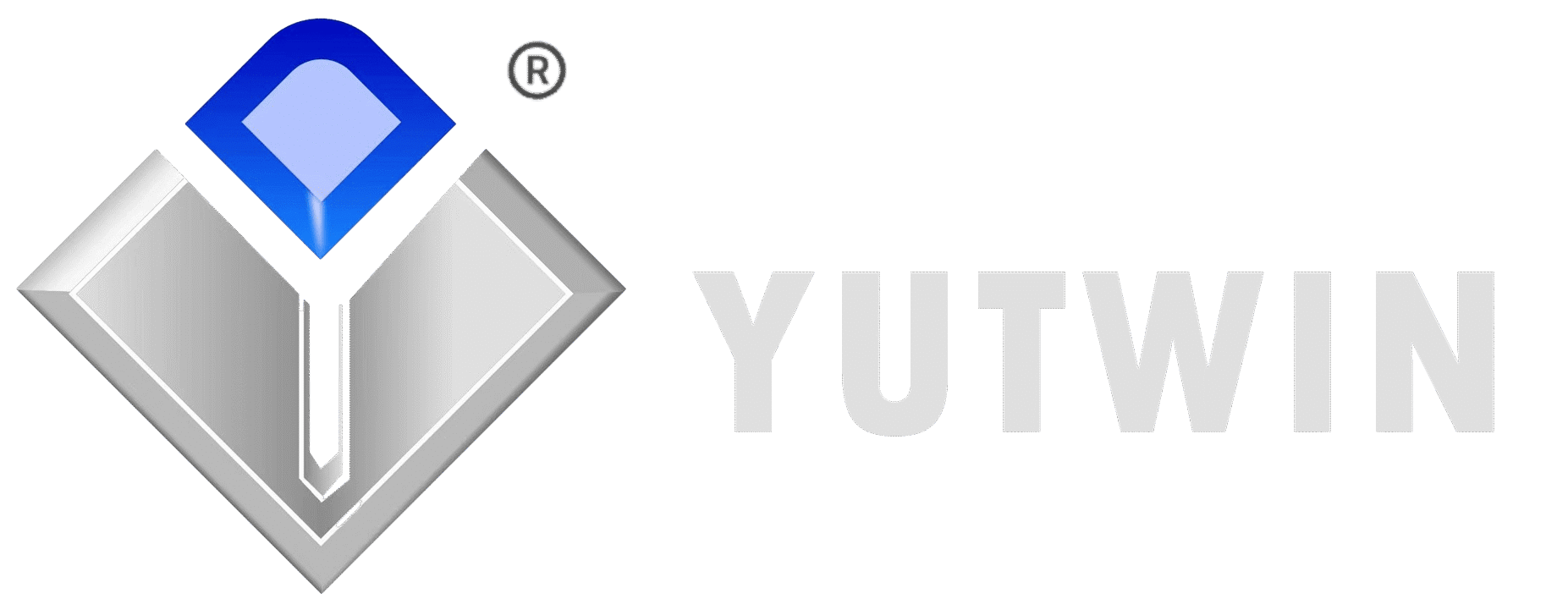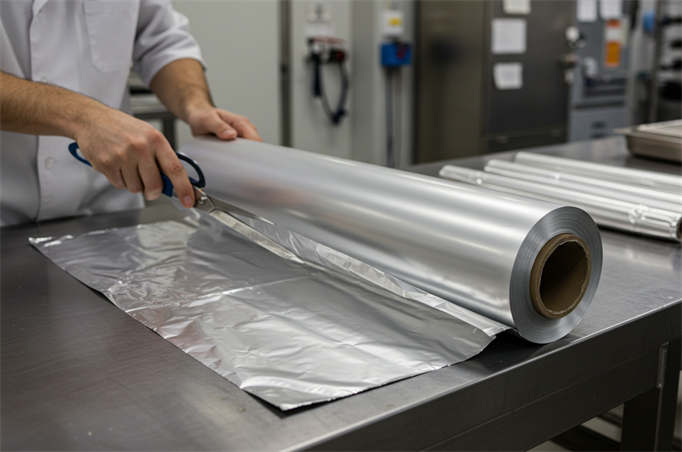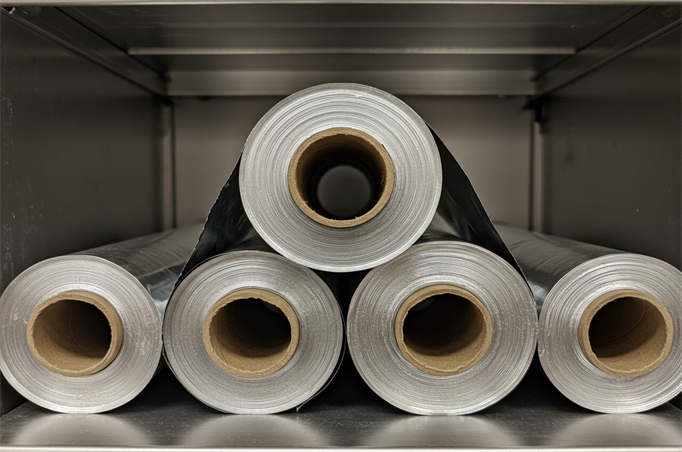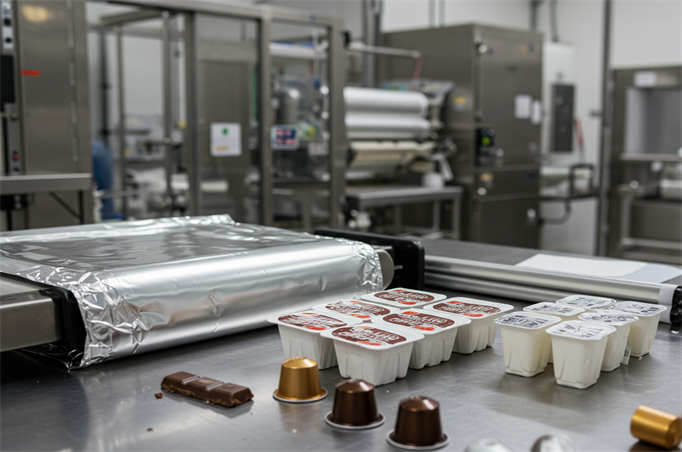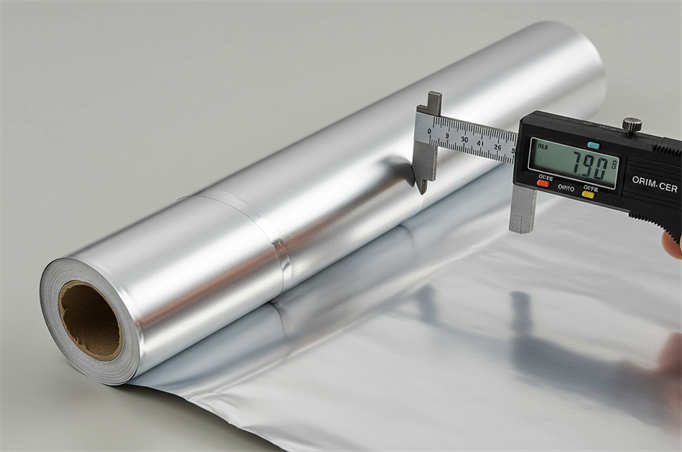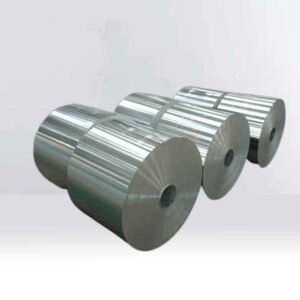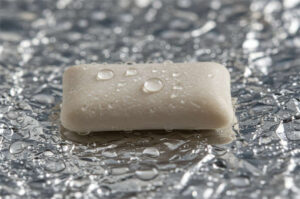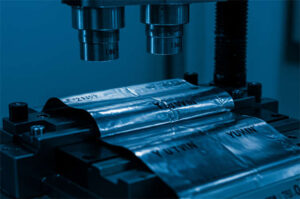Global energy transition and industrial upgrades are reshaping aluminum foil’s role. This lightweight, high-performance material now moves rapidly from traditional packaging into new energy vehicles, energy storage batteries, and smart devices. China leads as the world’s largest aluminum foil producer and consumer. Its industry chain dynamics, technological iterations, and policy directions have become focal points for global industries and investors.
Industry Status: From “Traditional Packaging” to “Emerging Sectors”
1. Supply-Demand Landscape: Overall Oversupply, Structural Shortage in High-End Segments
China’s aluminum foil industry has formed a complete chain: “upstream raw materials – midstream manufacturing – downstream applications.” Upstream centers on bauxite, alumina, and electrolytic aluminum. Midstream covers packaging foil, air conditioning foil, battery foil, and electronic foil. Downstream applications span food packaging, home appliances, new energy vehicles, and energy storage.
China Research reports show aluminum foil output grew from 3.83 million tons in 2018 to 5.02 million tons in 2022. This represents a 7% compound annual growth rate. Output climbed further to 5.10 million tons in 2023, up 1.6% year-on-year. However, the industry faces overall oversupply. Low-end capacity competition remains fierce. Yet high-end aluminum foil—such as high-strength battery foil and high-precision electronic foil—still relies on imports, creating significant supply gaps.
This contradiction stems from structural differentiation in downstream markets. Packaging foil dominates with 48.8% share in 2022. It serves food, pharmaceutical, and cosmetic packaging. Consumer upgrades drive its sustained growth. Air conditioning foil accounts for 20.32%. It benefits from energy efficiency upgrades and green transformation in home appliances. Battery foil holds 5.56% but grows fastest, becoming the industry’s core engine.
China Research notes that explosive growth in new energy vehicles and energy storage stations opens a “golden window” for battery foil demand. By 2029, the global aluminum foil market will surpass $370 billion (converted from 2690 billion RMB), with 5.19% compound annual growth. Battery foil’s share could rise above 15%.
2. Regional Clusters: Evolution from “Scattered Layout” to “Core Hubs”
China’s aluminum foil industry shows clear regional clustering. Five provinces—Henan, Shandong, Jiangsu, Zhejiang, and Guangdong—concentrate over 60% of national capacity. Henan leads with enterprises like Mingtai, Longding, and Chalco Luoyang Aluminum Foil. They form complete chains from electrolytic aluminum and recycled aluminum to high-end aluminum foil manufacturing. Shandong leverages electrolytic aluminum resources to develop air conditioning foil and packaging foil. Jiangsu and Zhejiang use precision processing technology and electronics industry foundations to dominate electronic foil and battery foil.
China Research analyzes that this regional division reflects both resource endowments and deepening supply chain collaboration. Upstream raw material companies lock in supply with midstream manufacturers through equity cooperation and long-term agreements. Downstream application companies drive product iteration through joint R&D and customized production.
Technological Breakthroughs: From “Cost Competition” to “Value Creation”
1. Battery Foil: The “Invisible Champion” of New Energy Vehicles
Feuille de batterie serves as core material for lithium-ion battery positive electrode current collectors. Its performance directly impacts battery energy density, cycle life, and safety. New energy vehicles push toward higher range and fast charging. This accelerates battery foil technology iteration. Thickness compresses from 16 microns to below 10 microns. Tensile strength rises above 220MPa. Surface roughness controls within 0.2 microns.
China Research mentions that companies like Dingsheng New Materials develop fourth-generation high-strength battery foil through integrated “alloy design + precision rolling + surface treatment” processes. They not only meet demands from leading battery makers like CATL and BYD but also export to international clients like LG Chem and Panasonic. They become crucial links in global supply chains.
2. Electronic Foil: “Foundation Material” for 5G and AI Era
Electronic foil serves capacitors, sensors, and integrated circuits extensively. Its performance requirements exceed traditional aluminum foil significantly. Purity must reach above 99.99%. Thickness controls below 5 microns. It needs high conductivity, high heat resistance, and low loss characteristics.
China Research points out that accelerating construction of 5G base stations, data centers, and AI servers drives surging demand for electronic foil in high-frequency capacitors and solid-state batteries. Companies like Dongyangguang and Wanshun New Materials import advanced equipment from Germany and Japan. They combine self-developed “ultra-pure aluminum purification – ultra-thin rolling – laser etching” processes. They successfully break foreign monopolies. Product performance reaches international advanced levels. Some indicators even surpass international giants like Hitachi Metals and Mitsubishi Materials.
3. Green Manufacturing: From “End-of-Pipe Treatment” to “Full-Chain Carbon Reduction”
Stricter environmental policies push the aluminum foil industry toward green transformation. Traditional aluminum foil production uses “electrolytic aluminum – casting – rolling” processes. These consume high energy and generate large carbon emissions. New “recycled aluminum + short-process” technology recycles waste aluminum foil and aluminum cans. After smelting and refining, it rolls directly. Energy consumption drops 70%. Carbon emissions decrease 85%.
China Research mentions that companies like Changlv Stock build the world’s first integrated “recycled aluminum – battery foil” production line. Annual waste aluminum processing capacity reaches 100,000 tons. Product carbon footprint decreases 60% compared to primary aluminum foil. They successfully enter supply chains of international automakers like Tesla and BMW. Additionally, frontier technologies like biometallurgy and hydrogen smelting enter pilot stages. They promise to further reduce industry environmental costs.
Business Models: Evolution from “Single-Point Breakthrough” to “Ecosystem Synergy”
1. Industry Chain Integration: From “Linear Competition” to “Network Symbiosis”
Aluminum foil industry competition shifts from single-product competition to supply chain collaborative competition. Upstream companies extend downstream through mergers and joint ventures. China Aluminum Corporation acquires Yunnan Aluminum to enter battery foil and electronic foil markets. Midstream manufacturers bind downstream customers through “technology licensing + joint R&D” models. Dingsheng New Materials establishes a joint laboratory with CATL to develop next-generation high-nickel battery foil. Downstream application companies drive product iteration through “reverse customization.” BYD cooperates with Wanshun New Materials to develop “ultra-thin high-strength battery foil.” This reduces battery pack weight by 15% and increases range by 8%.
China Research suggests companies should build “raw materials – manufacturing – application” closed-loop ecosystems through equity investment and strategic alliances. This enhances risk resistance and bargaining power.
2. International Expansion: From “Export-Oriented” to “Global Configuration”
As China’s aluminum foil capacity expands and international trade frictions intensify, international expansion becomes inevitable for leading companies. China Research analyzes three internationalization paths. First, “capacity going overseas”—building battery foil production bases in Southeast Asian countries like Indonesia and Malaysia to avoid tariff barriers and approach end markets. Second, “technology export”—transferring electronic foil production processes to emerging markets like India and Brazil for technology licensing fees. Third, “brand acquisition”—acquiring local aluminum foil companies in Europe and North America to gain channel resources and certification qualifications.
For example, Mingtai Aluminum establishes an R&D center in Germany. It partners with Fraunhofer Institute to develop “aviation-grade aluminum foil.” It successfully enters Airbus and Boeing supply chains. This achieves the leap from “Made in China” to “Chinese Brand.”
China’s aluminum foil industry stands at a critical turning point from “scale expansion” to “value reconstruction.” Aluminum foil serves not only as lightweight, high-performance basic material but also as China manufacturing industry’s ticket to the high end of global value chains. In this green revolution, only regulatory development-led technological innovation and ecosystem synergy-built competitive barriers can write new chapters of sustainable development.
Frequently Asked Questions (FAQs)
1. What is aluminum foil used for in new energy vehicles? Aluminum foil serves as the current collector material in lithium-ion batteries. It forms the positive electrode and directly affects battery performance, energy density, and charging speed.
2. How thick is battery-grade aluminum foil? Modern battery foil ranges from 10 to 16 microns thick. Advanced manufacturers now produce ultra-thin foils below 10 microns for higher energy density batteries.
3. What’s the difference between packaging foil and battery foil? Packaging foil requires good barrier properties and formability for food and pharmaceutical packaging. Battery foil needs high tensile strength, precise thickness control, and superior electrical conductivity for energy storage applications.
4. Which countries import the most aluminum foil from China? Major importers include the United States, Japan, South Korea, Germany, and Southeast Asian nations. New energy vehicle markets drive particularly strong demand for battery foil.
5. Is recycled aluminum foil as good as primary aluminum foil? Yes. Recycled aluminum foil can match primary aluminum foil quality when processed correctly. It offers 70% lower energy consumption and 85% reduced carbon emissions while maintaining performance standards.
6. What certifications does aluminum foil need for food packaging? Food-grade aluminum foil requires FDA approval, EU food contact material certification, and ISO 9001 quality management certification. It must pass migration tests and heavy metal content limits.
7. How does aluminum foil thickness affect battery performance? Thinner foil increases energy density by reducing inactive material weight. However, it must maintain sufficient tensile strength to prevent tearing during battery manufacturing and operation.
8. What equipment do manufacturers use to produce ultra-thin aluminum foil? Manufacturers use multi-stand tandem cold rolling mills, precision tension control systems, and automated thickness measurement devices. Advanced producers employ laser surface treatment and continuous annealing furnaces.
9. Can aluminum foil be used in solid-state batteries? Research continues on aluminum foil applications in solid-state batteries. Modified surface treatments and alloy compositions show promise for next-generation solid-state battery current collectors.
10. How do tariffs affect aluminum foil international trade? Trade tensions have led companies to establish overseas production facilities in tariff-free zones. They also pursue free trade agreements and invest in local manufacturing to serve regional markets directly.
